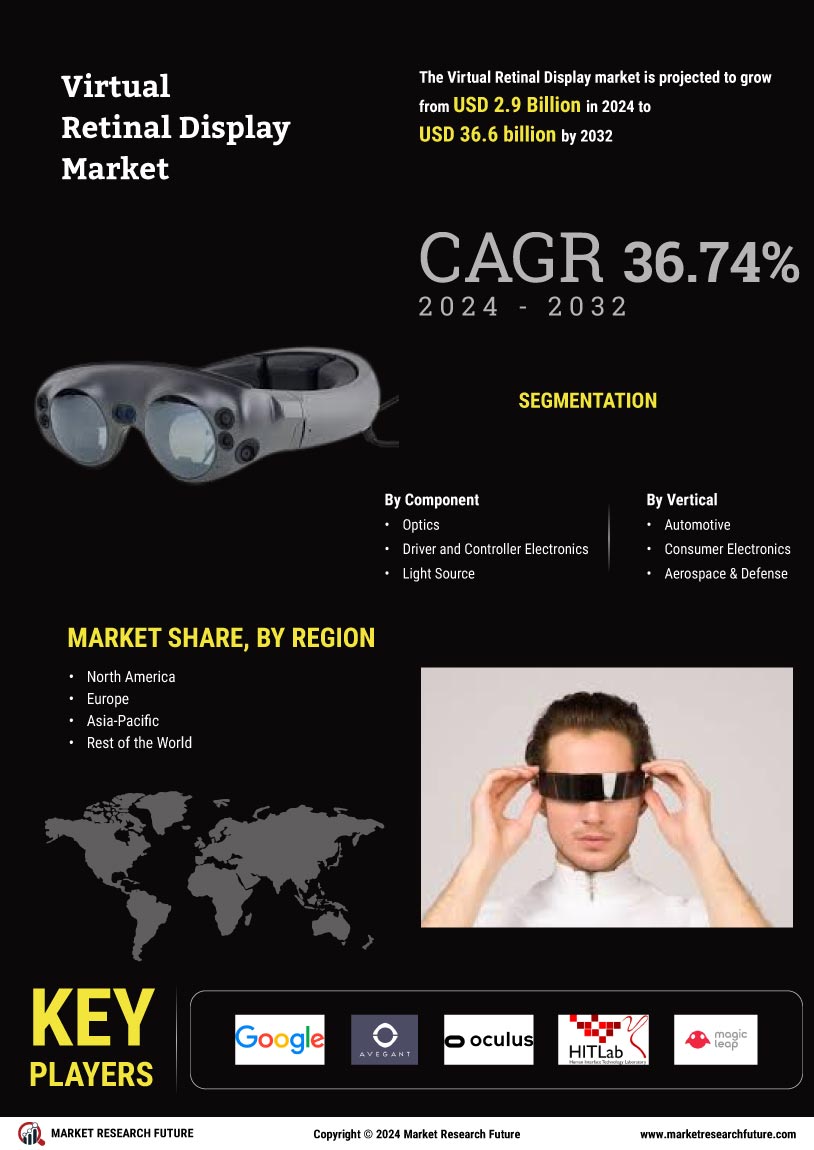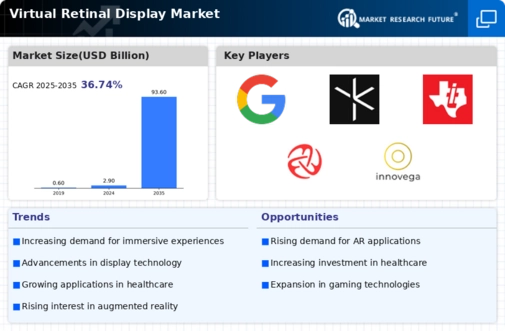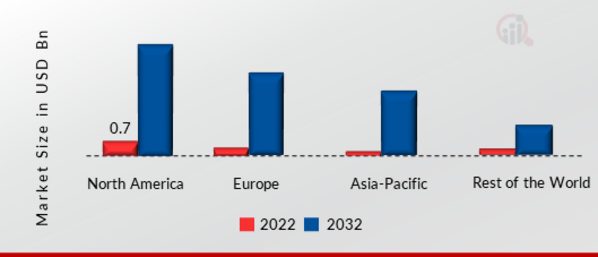Leading market players to provide a broad product range, market participants are boosting their spending in research and development departments. By engaging in market developments including new product launches, contractual agreements, mergers and acquisitions, higher investments, and collaboration with other organizations, these companies are also pursuing various strategic efforts to expand their worldwide presence. Additionally, the leading companies in the Virtual Retinal Display industry started pricing their goods reasonably.
Increasing their regional and local presence is one of the main strategies the market leaders use in the global Virtual Retinal Display industry sector. The global Virtual Retinal Display industry company has recently produced goods with some of the most important advantages. Major players in the Virtual Retinal Display market include Google Inc, Avegant Corporation, Occulus VR, Human Interface Technology Laboratory, Magic Leap, Texas Instruments, and Microvision Inc.
Online advertising, search engine technology, cloud computing, computer software, quantum computing, e-commerce, artificial intelligence, and consumer electronics are the main areas of interest for Google LLC, an American multinational technology firm. Due to its market domination, data collecting, and technological advantages in artificial intelligence, it has been called "the most powerful company in the world" and one of the most valuable brands globally. Along with Microsoft, Amazon, Apple, Meta, and Apple, its parent firm Alphabet is regarded as one of the Big Five American technological corporations.
While pursuing their PhDs at Stanford University in California, computer scientists Larry Page and Sergey Brin started Google on September 4, 1998. Together, they possess around 14% of their publicly traded shares and, through super-voting stock, 56% of their shareholder voting power.
Texas Instruments Incorporated (TI) is an American technological business with its main office in Dallas, Texas. It creates and produces integrated circuits and semiconductors, which it then sells to producers and designers of electronics worldwide. According to sales volume, it is one of the top 10 semiconductor businesses in the world. The firm concentrates on creating embedded CPUs and analog circuits, which provide more than 80% of its sales. Calculators, microcontrollers, and multi-core processors are among the educational technology items that TI also makes using its digital light processing technology. As of 2016, the business has 45,000 patents globally.
After Geophysical Service Incorporated, a business established in 1930 that produced equipment for the seismic industry and defense electronics, was reorganized, Texas Instruments was created in 1951.















